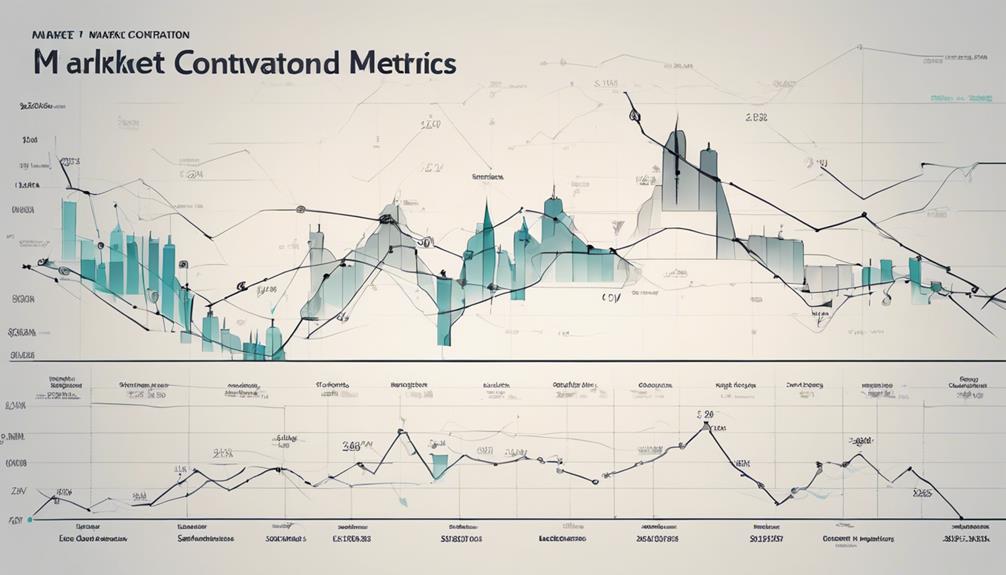Horizontal Mergers: A Comparative Analysis

Let's dive into the comparison of horizontal mergers within the same industry on a global scale. We will analyze their impact on competition, efficiency, and the crucial role of regulatory supervision.
In the US, EU, and other regions, merger regulations are designed to curb anti-competitive behaviors while also considering potential efficiency improvements. Defining the market accurately, examining market entry dynamics, and striking a balance between competition and consumer benefits are vital aspects that regulators must consider.
Understanding the different types of mergers and acquisitions is essential when evaluating horizontal mergers. Horizontal mergers occur when companies operating in the same industry combine forces. This type of merger can lead to increased market power, potentially affecting prices and consumer choices.
By looking at historical data and empirical evidence, we can gain valuable insights into how horizontal mergers have impacted various industries over time.
Exploring the nuances of horizontal mergers provides a deeper understanding of the complexities involved in these transactions. It is crucial to consider not only the immediate impact on competition but also the long-term effects on market dynamics.
By examining case studies and industry reports, we can draw valuable lessons on how regulators can effectively oversee horizontal mergers to ensure a fair and competitive marketplace for all stakeholders.
Key Takeaways
Horizontal mergers happen when two companies in the same industry join forces to increase their market share and reduce costs. However, these mergers are closely monitored by antitrust laws and competition policies to prevent any negative impacts on competition.
Global merger frameworks, such as the US Antitrust Laws and EU Competition Policies, play a crucial role in overseeing horizontal mergers to ensure fair competition and prevent any anti-competitive behavior.
When evaluating the competitive effects of horizontal mergers, it is essential to look at factors like market concentration, efficiency claims, and potential anti-competitive outcomes. Tools like the Herfindahl-Hirschman Index are commonly used to assess these aspects.
Analyzing the efficiency considerations of horizontal mergers is important because they can lead to operational efficiencies, economies of scale, and a stronger competitive position in the market.
Regulatory oversight and a focus on consumer welfare are key factors in approving horizontal mergers. It is crucial to strike a balance between promoting competition and safeguarding consumer interests in these merger deals.
Understanding Horizontal Mergers
Horizontal mergers happen when companies in the same industry join together. They do this to increase their market share, lower costs by producing more, and sometimes to reduce competition. These mergers are closely watched by strict rules like the US Antitrust Laws and EU Competition Policies. These rules are there to stop unfair practices and protect consumers.
When we look at the Horizontal Merger Guidelines, we can see how these mergers affect competition, market control, and prices. Horizontal mergers can give companies more power in the market, which might lead to higher prices and less innovation. But it's essential to think about how the market is defined and how different factors can impact consumers.
In the end, studying horizontal mergers helps us see how companies try to grow their market share while regulators work to keep the market competitive and fair for everyone.
Comparing Merger Frameworks Globally

Understanding horizontal mergers involves looking at the different regulations that govern these transactions in various countries and regions. In the US, the Sherman Act and Clayton Act are key laws that regulate mergers, while the EU has its own competition policies.
The primary aim of these global merger regulations is to prevent behaviors that could harm competition and assess the effects on market competition and innovation.
In both the US and the EU, authorities closely examine horizontal mergers to ensure fair competition and protect consumers. They evaluate merger proposals, assess their impact on the market, and may impose certain conditions for approval or even require divestitures to maintain competition in the market.
Companies involved in horizontal mergers need to understand these global merger frameworks to navigate regulatory challenges and comply with antitrust laws effectively.
Assessing Competitive Effects of Mergers

When we look at horizontal mergers, we focus on market concentration to see if they could harm competition. We also assess the efficiencies claimed by the merging companies to see if they'd benefit consumers more than any potential harm. It's crucial to strike a balance between these factors to determine the overall impact of a merger.
Horizontal mergers involve companies that operate in the same industry and produce similar products or services. These mergers can lead to a reduction in competition, potentially resulting in higher prices for consumers. Research has shown that horizontal mergers can indeed have anticompetitive effects, especially when they involve significant market players.
Efficiency claims made by merging companies are also a key aspect to consider. While mergers can sometimes lead to cost savings and improved productivity, it's important to carefully evaluate whether these claimed efficiencies will truly benefit consumers in the long run. Studies have shown that not all efficiency claims materialize post-merger, and sometimes consumers end up facing higher prices and reduced choices.
Market Concentration Analysis
Understanding market concentration is crucial when analyzing the impact of horizontal mergers on competition. To begin, we calculate the combined market share of the merging companies and assess the overall market concentration using the Herfindahl-Hirschman Index (HHI).
A higher post-merger market concentration could suggest diminished competition, prompting competition authorities to closely examine potential anticompetitive effects.
Horizontal mergers involve companies that operate in the same industry and produce similar products or services. These mergers can lead to increased market power for the merged entity, potentially raising concerns about reduced competition and higher prices for consumers.
Research has shown that horizontal mergers can result in both positive and negative effects. On one hand, they can lead to cost savings, increased efficiency, and innovation due to economies of scale. On the other hand, they may also reduce choices for consumers, limit innovation, and result in higher prices if competition is significantly weakened.
Efficiencies Evaluation
We carefully assess the efficiencies created by mergers to determine their impact on competition and ensure benefits for consumers. Our thorough evaluation focuses on identifying potential cost savings, enhanced operational performance, and improved bargaining power that could result from the merger.
We extensively analyze how merging resources and capabilities can lead to lower prices, increased innovation, and higher product quality for customers. By balancing these efficiencies with concerns about market power and anticompetitive behavior, we strive to maximize consumer welfare by approving mergers that enhance efficiencies without harming competition.
Our ultimate objective is to ensure that approved mergers deliver tangible benefits that outweigh any potential negative consequences, fostering a more dynamic and innovative marketplace for the consumers we serve.
Efficiency Considerations in Horizontal Mergers

Horizontal mergers bring about significant operational efficiencies that boost the competitiveness of the merged entity. These transactions often lead to economies of scale, streamlined processes, and reduced resource duplication, resulting in cost savings and improved overall efficiency.
Companies pursue horizontal mergers primarily to decrease production costs and enhance efficiency by combining complementary capabilities and resources. The realization of important synergies is crucial for maximizing the efficiency gains from horizontal mergers. By leveraging these operational efficiencies, firms can strengthen their competitive position and negotiate better terms with suppliers.
Ultimately, horizontal mergers offer a strategic opportunity to enhance operational performance and set the merged organization up for long-term success in the market. Thoughtful consideration of efficiency implications is key for maximizing the strategic and financial benefits of such transformative transactions.
Market Definition and Entry Analysis

Understanding market boundaries and analyzing barriers to entry are crucial when assessing the impact of horizontal mergers. The delineation of the market directly affects how we evaluate the potential price effects and other anticompetitive issues that may arise from the merger.
Moreover, examining the ease or difficulty for new companies to enter the market is essential in determining whether the merged entity will face enough competition post-merger.
Horizontal mergers involve companies that operate in the same industry and produce similar products or services. These mergers can lead to increased market concentration, potentially reducing competition and harming consumer welfare.
By defining the relevant market and assessing entry barriers, we can better understand the competitive dynamics at play and predict the likely effects of the merger on prices, quality, and innovation.
Research suggests that horizontal mergers can result in price increases, reduced product variety, and less incentive for firms to invest in research and development. Antitrust authorities carefully analyze these effects to ensure that mergers don't harm competition or consumers.
By focusing on market definition and entry barriers, regulators can make informed decisions about whether to approve a merger, block it, or impose conditions to mitigate anticompetitive effects.
Relevant Market Delineation
Defining the relevant market accurately is crucial when assessing the potential impact of a horizontal merger. Issues with methodology and assumptions can make this process challenging, often leading to flawed conclusions and counterproductive outcomes.
A precise market definition is key, as flawed analysis may overlook important factors that affect competition post-merger. It's essential to thoroughly examine efficiency gains when evaluating the effects of horizontal mergers. However, these gains are often not given enough consideration in the assessment.
When analyzing post-merger entry, it's important to consider all elements that could impact the success of new competitors. Failing to do so can obscure the true competitive landscape of the market.
Barriers to Entry Analysis
Market definition and entry analysis are crucial when evaluating the impact of horizontal mergers. Understanding potential barriers to entry is vital to determine if new competitors can effectively constrain the merged firm's actions. Neglecting or misunderstanding these entry dynamics can lead to inaccurate assessments of the merger's effects on competition.
Defining relevant markets can be complex, but it sets the stage for robust entry analysis. Assessing the ease of post-merger entry and considering the entry induced by an acquisition are critical in evaluating competition impacts. Failing to account for these factors can result in regulatory decisions that don't align with market realities.
Horizontal mergers involve firms operating in the same industry, potentially reducing competition. Analyzing entry barriers is key to assessing the merger's impact on market dynamics. Research shows that high entry barriers can lead to increased market power for the merged entity, potentially harming consumers.
Regulatory Oversight of Horizontal Mergers

Regulatory oversight of horizontal mergers is crucial to maintain competitive markets and protect consumer welfare. Adhering to antitrust laws like the Sherman Act and Clayton Act in the US, as well as the EU's Competition Policies, is vital for assessing the impact of proposed mergers.
The FTC and DOJ have a significant role in scrutinizing merger proposals to evaluate potential increases in market power and the overall effect on competition. Their focus is on ensuring fair competition and safeguarding consumer interests by imposing necessary conditions for merger approval.
When evaluating mergers, it's important to consider barriers to entry and their impact on innovation, analyze how the merger may affect pricing, product quality, and consumer choice, and determine the overall impact on competitive markets and consumer welfare.
Balancing Competition and Consumer Welfare

When looking at horizontal mergers, we need to find the right balance between promoting competition and protecting consumers. The Merger Guidelines state that antitrust authorities such as the Department of Justice (DOJ) and Federal Trade Commission (FTC) carefully examine horizontal mergers to prevent anti-competitive practices and maintain a level playing field.
Horizontal mergers have the potential to increase market concentration, decrease competition, and possibly harm consumer prices and innovation. That's why we thoroughly analyze how these mergers impact market dynamics, pricing strategies, and the structure of the market after the merger.
Our aim is to encourage efficiency improvements while keeping consumer well-being at the forefront through competition policies and antitrust regulations.
Frequently Asked Questions
What Is Competitive Analysis of Mergers?
We analyze mergers to assess antitrust regulatory concerns, market concentration implications, and consumer welfare impacts. We evaluate potential barriers to entry, economic efficiency, merger synergies, and pricing power to ensure that competitive markets promote innovation.
Horizontal mergers involve companies that operate in the same industry and produce similar products or services. These mergers can lead to increased market power, reduced competition, and potentially higher prices for consumers. For example, the merger between Exxon and Mobil in the oil industry raised concerns about market dominance and potential price manipulation.
Research shows that horizontal mergers can stifle innovation and limit consumer choice. A study by the University of California, Berkeley found that mergers in concentrated industries often result in decreased investment in research and development, leading to fewer new products and services for consumers.
What Are Horizontal Mergers?
Horizontal mergers involve two companies in the same industry coming together to create a stronger, more competitive entity. These mergers allow companies to increase their economies of scale, expand their product offerings, and integrate technology to improve their overall operations. By joining forces, companies can unlock new opportunities for innovation, streamline their supply chains, and reach a larger customer base.
Horizontal mergers have been a common strategy for companies looking to grow and stay ahead in today's competitive market. Through these mergers, companies can combine their resources and expertise to create a more efficient and effective organization. This can lead to cost savings, improved market share, and increased profitability for the merged entity.
It is important for companies engaging in horizontal mergers to navigate the regulatory environment carefully. Antitrust laws are in place to prevent monopolies and promote fair competition, so companies must ensure that their merger complies with these regulations. By addressing any potential antitrust concerns early on, companies can avoid costly delays and legal issues that may arise during the merger process.
What Is the Effect of Horizontal Merger?
Horizontal mergers have the potential to increase economies of scale and market power, leading to cost reductions and lower prices for consumers. However, the resulting increase in market concentration can also raise concerns about diminished competition, innovation, and overall consumer welfare. This necessitates strong regulatory oversight to ensure that the benefits of the merger are balanced with the protection of market competition and consumer interests.
What Advantage Would a Horizontal Merger With a Competitor Have?
Horizontal mergers with competitors offer several advantages. By combining forces with a rival company in the same industry, we can achieve cost savings, increase our market share, and benefit from economies of scale. This consolidation reduces the level of competition in the market, allowing us to have more control over pricing and potentially increase our profitability.
Furthermore, a horizontal merger can lead to synergies between the merging companies, enabling us to streamline operations, share best practices, and improve overall efficiency. This can result in technological advancements and innovations that benefit not only the companies involved but also the customers who will have access to better products and services.
Diversification is another key advantage of a horizontal merger. By joining forces with a competitor, we can expand our product offerings and reach a larger customer base. This can help us reduce risks associated with relying too heavily on a single product or market segment, making our business more resilient and sustainable in the long run.
Conclusion
Horizontal mergers are a common occurrence in the business world, where companies merge with others in the same industry. This type of merger is driven by the desire to increase market share, reduce competition, and achieve economies of scale. Horizontal mergers can lead to greater efficiency and cost savings for the merged entity, as they eliminate duplicate functions and streamline operations.
There are different types of mergers and acquisitions, each with its own set of benefits and challenges. Horizontal mergers, in particular, are closely scrutinized by antitrust regulators to ensure that they don't result in anti-competitive behavior or harm consumer welfare. By consolidating market power, horizontal mergers can sometimes lead to higher prices for consumers and reduced innovation in the industry.
Despite these potential drawbacks, horizontal mergers can also bring about positive outcomes. For example, they can lead to increased investment in research and development, as well as the introduction of new and improved products and services. By combining resources and expertise, companies can create synergies that drive innovation and growth in the market.
Overall, horizontal mergers are a complex dance between competition and cooperation. By carefully navigating this landscape and considering the potential benefits and risks, companies can make informed decisions that lead to long-term success and economic prosperity.





